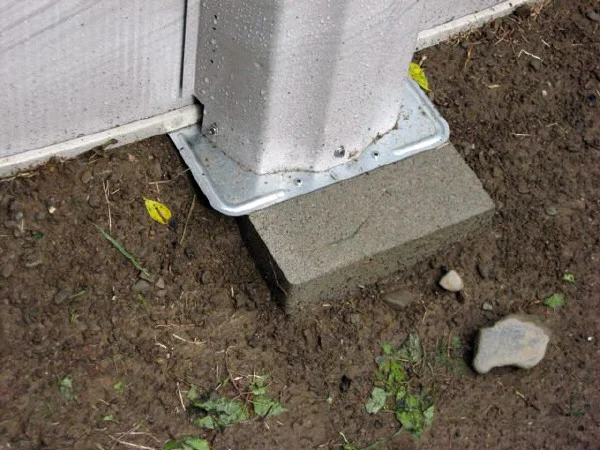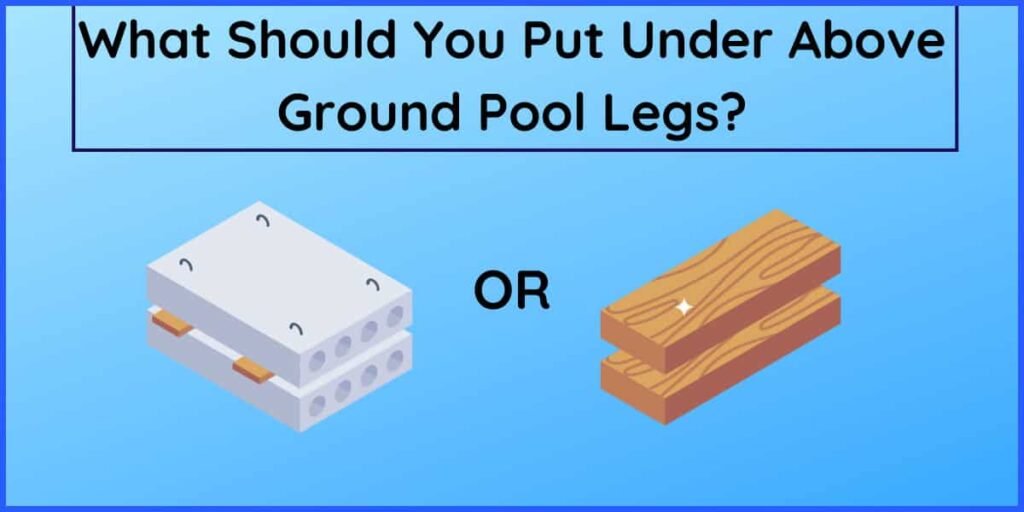Introduction
When it comes to setting up your pool, ensuring its stability and longevity is crucial. An often overlooked aspect can be what to put underneath pool legs. This seemingly minor decision can have a significant impact on your pool’s performance and safety. In this comprehensive guide, we will explore the best materials to place under your pool legs to keep your swimming oasis in top-notch condition.
Understanding the Importance of Materials Under Pool Legs
The Role of Proper Support
Before diving into the materials themselves, it’s essential to understand why providing adequate support for your pool legs is vital. Pool legs bear the weight of the water, pool structure, and swimmers, making them a critical component of your pool’s stability.
Ensuring that your pool legs have the proper support is like the foundation of a house – it’s the basis for everything else. Without it, you risk structural issues that can be costly to repair and potentially dangerous for anyone using the pool.
Avoiding Uneven Settling
Improper support can lead to uneven settling of your pool, which can cause structural damage over time. This settling can occur as the ground beneath your pool naturally shifts due to environmental factors. When your pool legs don’t have adequate support, they can’t adapt to these shifts, leading to stress on the pool walls and flooring.
Over time, this stress can cause cracks, leaks, or even complete structural failure. These issues not only demand costly repairs but can also pose a risk to swimmers’ safety. It’s crucial to address uneven settling by choosing the right materials for support.
Choosing the Right Materials
Concrete Pads
Concrete pads are a popular choice for supporting pool legs. They offer excellent stability and durability, ensuring your pool remains level and secure. However, due to their weight, installing concrete pads can be labor-intensive and may require professional assistance.

One benefit of concrete pads is that they distribute the weight evenly, reducing the risk of settling or shifting over time. While they may require more effort during installation, the long-term benefits in terms of pool stability and safety make them a worthwhile investment.
Pavers
Pavers are another sturdy option to consider. They come in various sizes and shapes, allowing you to customize the appearance of your pool area. Ensure proper leveling when using pavers to prevent uneven settling.
Pavers not only provide robust support but also allow for aesthetic customization. You can create intricate designs around your pool, enhancing its overall look. However, it’s crucial to pay extra attention to leveling during installation to maintain a flat surface for your pool legs.
Rubber Tiles
Rubber tiles are a comfortable and slip-resistant choice for underpool leg support. They are easy to install and provide a cushioned surface around the pool, enhancing safety.
Rubber tiles offer the added benefit of comfort and slip resistance. They create a softer surface around your pool, reducing the risk of slips and falls. Their ease of installation makes them an attractive option for DIY enthusiasts.
Gravel
Gravel is a cost-effective option that provides adequate support while allowing water drainage. However, it may require periodic replenishment to maintain its effectiveness.
Gravel is an economical choice for pool leg support, and its natural drainage properties are advantageous. Keep in mind that over time, gravel may settle and compact, requiring occasional replenishment to maintain its effectiveness as a support material.
Sand
Sand is a popular choice for pool leg support because it is affordable, easy to install, and provides good drainage and support. However, it is important to compact the sand properly during installation to prevent it from shifting over time.
To compact sand, you can use a hand tamper, a plate compactor, or a vibrating compactor. If you are using a hand tamper, be sure to tamp the sand in layers, each layer approximately 2-3 inches thick. If you are using a plate compactor or a vibrating compactor, follow the manufacturer’s instructions.
Once the sand is compacted, you can install your pool legs according to the manufacturer’s instructions. Be sure to check the level of the pool legs regularly and adjust the sand as needed to maintain a level pool.
Maintenance and Longevity
Regular Inspection
Regardless of the material you choose, it’s crucial to perform regular inspections to ensure the support remains intact. Look for signs of settling or erosion and address them promptly.
Regular inspections should become a part of your pool maintenance routine. By identifying issues early on, you can take corrective measures to prevent more extensive damage and costly repairs. This proactive approach ensures the longevity of your pool’s support system.
Seasonal Adjustments
Some materials, like gravel or sand, may require seasonal adjustments due to weather conditions. Be prepared to add or replace material as needed. If you live in an area with heavy rainfall, it may be in your best interest to choose a different method of stabilizing your pool legs.
Conclusion
Choosing the best materials to put under pool legs is a critical decision that can significantly impact the longevity and safety of your pool. Whether you opt for concrete pads, pavers, rubber tiles, gravel, or sand, proper installation and maintenance are key to a stable and enjoyable swimming experience.
FAQs
Q1: Can I use regular concrete instead of concrete pads?
- While regular concrete can be used, concrete pads are specifically designed for this purpose and offer better support and durability. It may be difficult to pour concrete in a manner that keeps your pool level and safe.
Q2: Are rubber tiles suitable for all types of pools?
- Rubber tiles are suitable for most pool types, but you should check the manufacturer’s recommendations for compatibility.
Q3: How often should I inspect the materials under my pool legs?
- At least once a year, with additional checks after extreme weather events.
Q4: Can I use more than one type of material under my pool legs?
- Mixing materials is not recommended, as it can lead to uneven support. Stick to one material for consistency.
Articles related to pool care:
